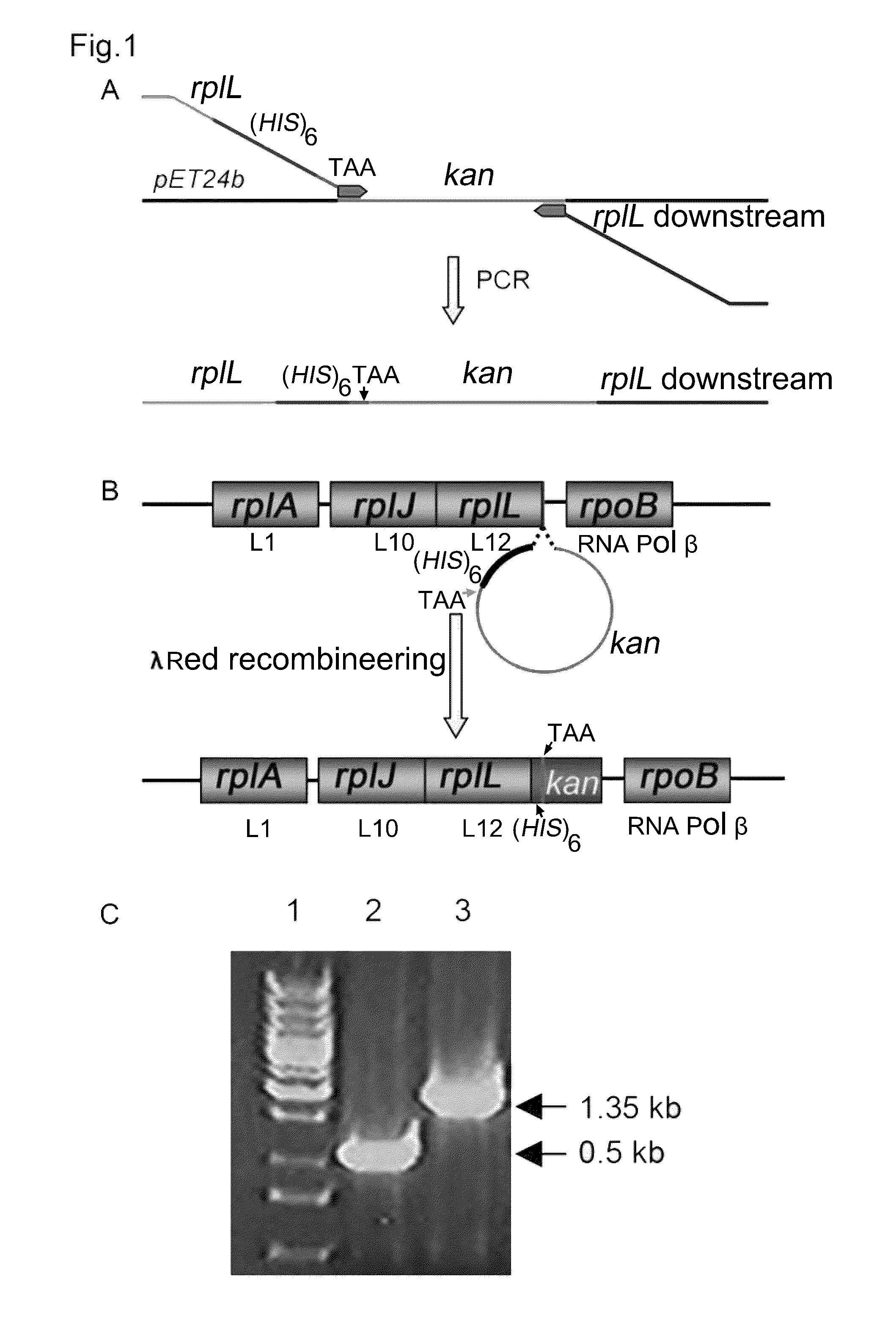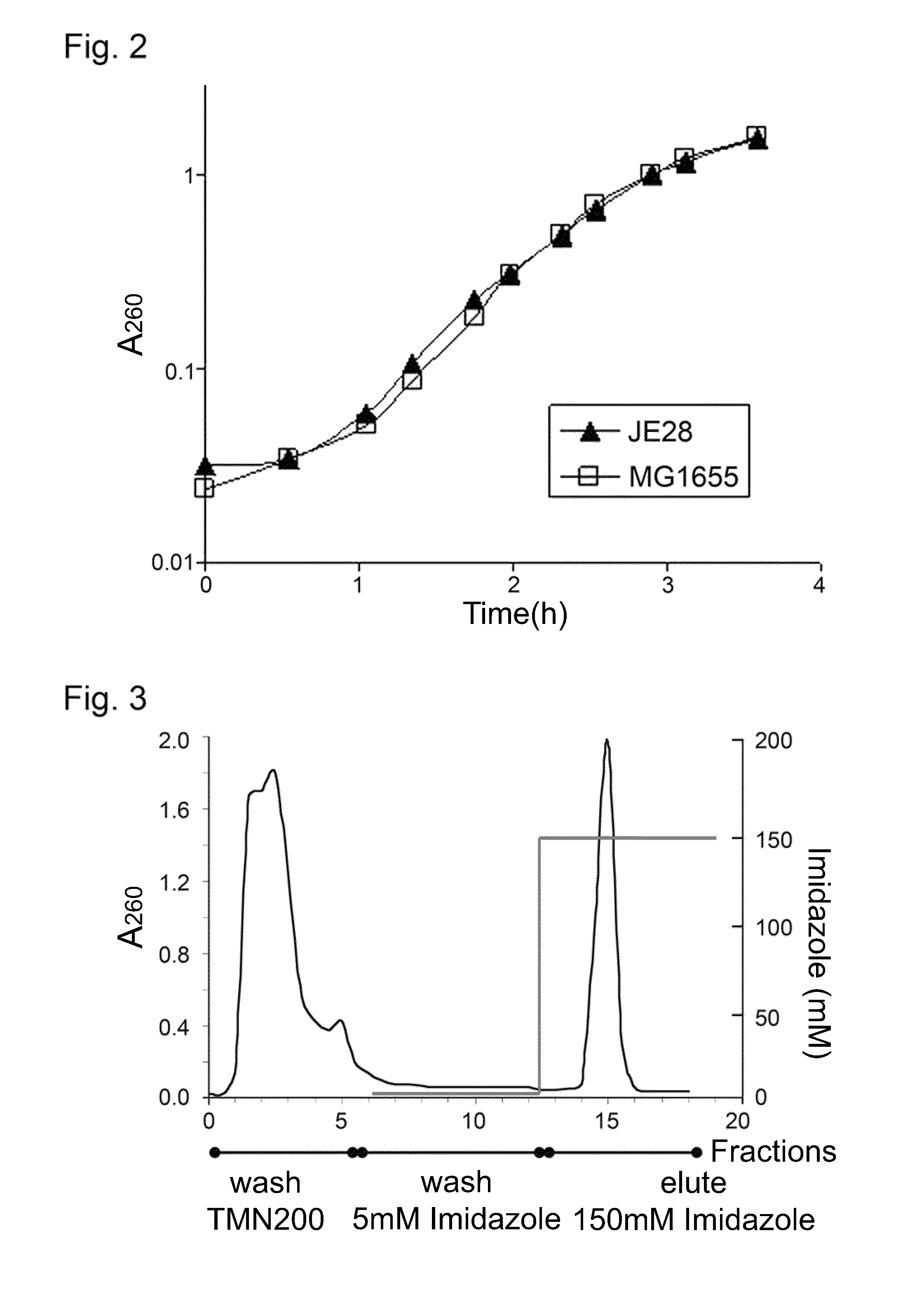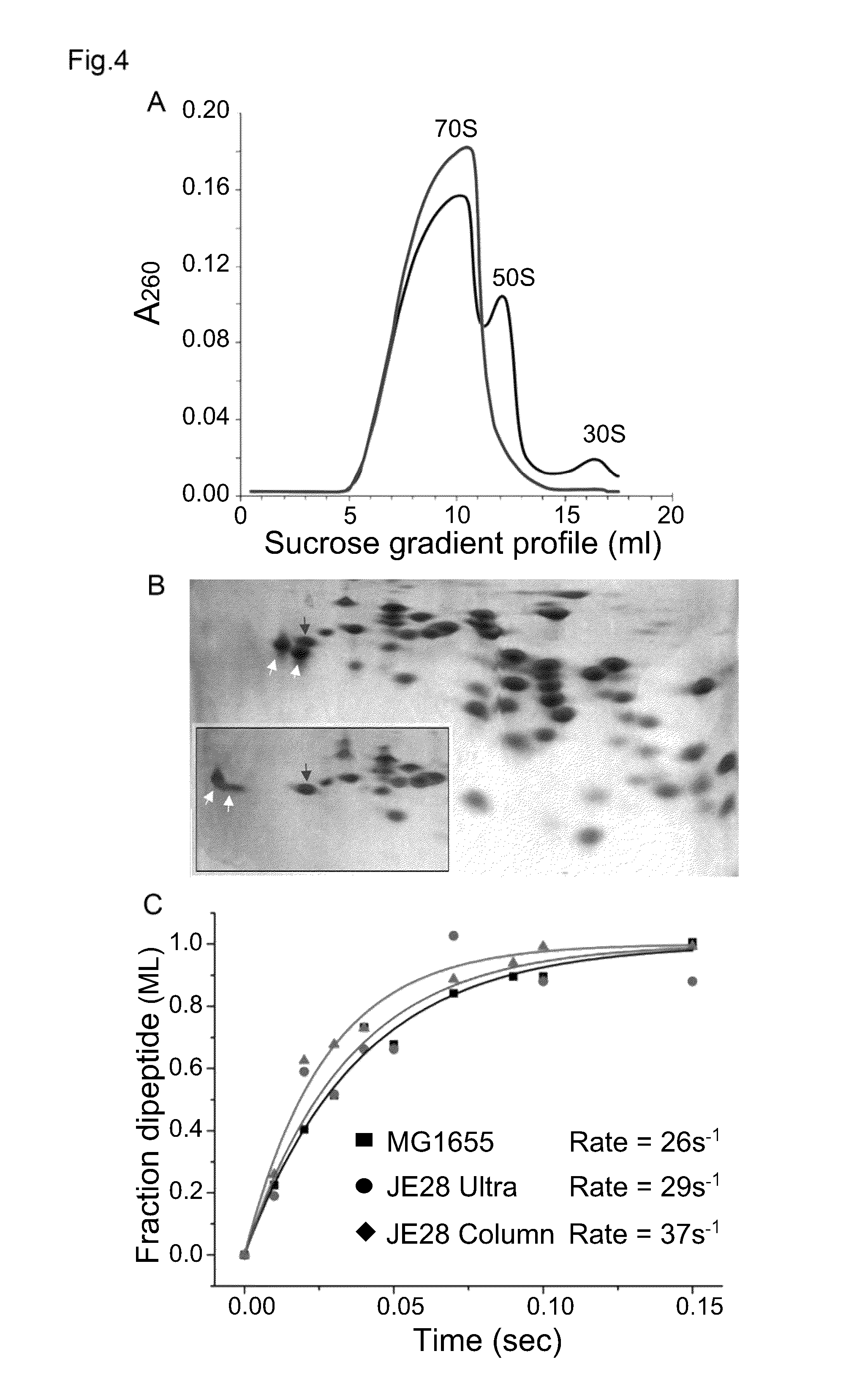Method for production and purification of macromolecular complexes
- Summary
- Abstract
- Description
- Claims
- Application Information
AI Technical Summary
Benefits of technology
Problems solved by technology
Method used
Image
Examples
example 1
Preparation of Linear DNA Cassette for λ Red Recombineering
[0033]Standard PCR conditions were used to amplify the kanamycin-resistant cassette (kan) using pET24b plasmid (Novagen) as a template and two specially designed primers (FIG. 1A). The forward primer had the sequence (5′GAAAAAAGCTCTGGAAGAAGCTGGCGCTGAAGTTGAAGTTAAACACCACCAC CACCACCACTAAAAACAGTAATACAAGGGGTGTTATG-3′) (SEQ ID NO. 2) that contained 43 nucleotides homologous to the 3′-end of the E. coli rplL gene minus the stop codon, followed by six CAC repeats coding for six histidines, then stop codon TAA and 25 nucleotides homologous to the beginning of the kan cassette on the Novagen pET24 plasmid. The reverse primer (5′-ATCAGCCTGATTTCTCAGGCTGCAACCGGAAGGGTTGGCTTAGAAAAACTCA TCGAGCATCAAATGAAA-3′) (SEQ ID NO. 3) contained sequences, reverse complementary to 39 nucleotides located immediately after the rplL gene followed by the reverse complementary sequence to the last 30 nucleotides of the kan cassette of pET24b. It is note-wort...
example 2
Construction of E. Coli Strains
[0034]Strain JE5 was constructed from E. coli HME6 strain (Costantino and Court, 2003; Ellis et al., 2001), where the stop codon of the rplL gene (coding ribosomal protein L12) was replaced by a linear PCR product encoding six histidines, a TAA stop codon followed by kanamycin-restistance cassette, using the λ Red recombineering system (Lee et al., 2001; Yu et al., 2000) (FIG. 1B). HME6 cells were made electroporation-competent and 1-2 μl of high quality PCR product (200-400 ng / μl) was added to 100 μl electro-competent HME6 cells and electroporated at 1.8 kV, 25 μF, and 200Ω. The electroporated cells were incubated overnight in 1 ml LB at 30° C. with aeration. Successful chromosomal recombinant colonies were selected on kanamycin plates and were confirmed by PCR with primers homologous to the flanking regions of the target site (FIG. 1C). Further, the C-terminus of rplL gene from some of the recombinant colonies was sequenced to confirm the correct ins...
example 3
Purification of his-Tagged Ribosomes
[0036]To purify the tetra-His6-tagged ribosomes, JE28 was grown in LB at 37° C. to A600 ˜1.0, slowly cooled to 4° C. to produce run off ribosomes and pelleted. The cells were resuspended in lysis buffer (20 mM Tris-HCl pH 7.6, 10 mM MgCl2, 150 mM KCl, 30 mM NH4Cl, and PMSF protease inhibitor 200 μl / l) with lysozyme (0.5 mg / ml) and DNAse I (10 μg / ml) and lysed using a French Press or sonicator (for smaller cell pellets <2-3 g). The lysate was clarified twice by centrifugation for 20 min at 18,000 rpm at 4° C. The lysate was divided into two equal halves and 70S ribosomes were purified with the conventional method (A, below) from one half whereas the affinity-purification method (B, below) was used on the other half. In parallel, ribosome from the parent strain MG1655 was also purified in the conventional way for comparison.
A: Conventional Method
[0037]For purifying JE28 ribosomes in a conventional method the cleared lysate was layered on top of equa...
PUM
| Property | Measurement | Unit |
|---|---|---|
| Electrical conductance | aaaaa | aaaaa |
| Electrical resistance | aaaaa | aaaaa |
| Affinity | aaaaa | aaaaa |
Abstract
Description
Claims
Application Information
 Login to View More
Login to View More - R&D
- Intellectual Property
- Life Sciences
- Materials
- Tech Scout
- Unparalleled Data Quality
- Higher Quality Content
- 60% Fewer Hallucinations
Browse by: Latest US Patents, China's latest patents, Technical Efficacy Thesaurus, Application Domain, Technology Topic, Popular Technical Reports.
© 2025 PatSnap. All rights reserved.Legal|Privacy policy|Modern Slavery Act Transparency Statement|Sitemap|About US| Contact US: help@patsnap.com



